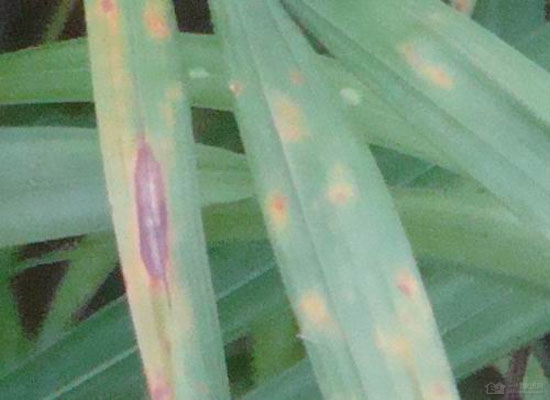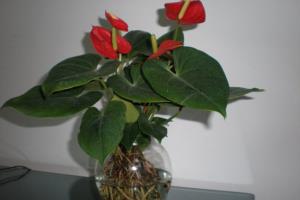Anthurium andraeanum at home, okay? let's look at the analysis of fengshui theory.
Leaf spot is a very common disease of loose-tailed sunflower, which will cause a withered and yellow spot on the green leaves of loose-tailed sunflower, which not only affects the appearance of loose-tailed sunflower, but also affects its growth. So, what are the symptoms of sunflower leaf spot disease? How to prevent and cure?

Loose tail sunflower (scientific name: Chrysalidocarpus lutescens H. Wendl.): also known as yellow coconut, Aoi Murasaki. Tufted evergreen shrubs or small trees of the genus Palmaceae. The stem is smooth, yellowish green, without burr, covered with wax powder when tender, with obvious leaf marks and ringed striations. The leaf surface is slippery and slender, pinnatifid, long 40~150cm, petiole slightly curved, apex soft. Like other plants, sunflower is threatened by various diseases in the process of growth, and leaf spot is one of the most common diseases.
1. Common symptoms
At the initial stage of the disease, the leaves appeared yellowish-brown dots, gradually expanded into stripes, and could converge into irregular necrotic blocks. Leaf tip and leaf edge are the most vulnerable. In severe disease, more than half of the leaves are dry and curled, such as burning; the center of the spot is dark or grayish white, the edge is surrounded by dark lines, and the disease part is scattered with small oval black spots in the later stage.
II. Pathogen
The leaf spot of sunflower caused by Pestalotia palmarum Cooke is caused by Sporium subphyla. The small black spot on the disease department is even the conidium disk of the pathogen. The conidia were buried at first and then exposed; the conidia were oval to rod-shaped, with 4 transverse septum, divided into 5 cells, 3 cells in the middle were brown, the cells at both ends were colorless, and there were 2-3 flagella at the top, about 8-15 μ m long, and the basal cells had small stalks.
Third, occurrence regularity
The disease usually occurs from May to November. High temperature and heavy rain are beneficial to the spread of the disease.
IV. Prevention and control methods
(1) strengthen nursery management: proper shade to avoid sun exposure during seedling raising.
(2) rational fertilization: do not apply nitrogen fertilizer, but should apply more potash fertilizer.
(3) Chemical control: Guoguang Yintai (80% Daimen zinc wettable powder) 600-800 times solution + Guoguang Sitalin (foliar fertilizer with amino acid chelating trace elements) can be sprayed regularly to prevent and supplement nutrition before disease prevention and improve ornamental. In the early stage of the disease, 25% prochloraz EC (such as Guoguang Bixian) was sprayed 500-600 times, or 50% manganese zinc wettable powder (such as Guoguang Yingna) 400-600 times. Use it 2-3 times at intervals of 7-10 days.
After understanding the symptoms and incidence regularity of sunflower leaf spot disease, various preventive measures can be taken as soon as possible to ensure that sunflower not only grows vigorously, but also has more ornamental value.
- Prev

What are the effects and functions of Gentiana
What are the effects and functions of Gentiana
- Next

Master the method of hydroponic culture of Anthurium andraeanum if you want to cultivate Anthurium andraeanum.
Master the method of hydroponic culture of Anthurium andraeanum if you want to cultivate Anthurium andraeanum.
Related
- Wuhan Hospital Iron Tree Blooming Result Was Instantly Frightened by the Gardener Master
- Which variety of camellia is the most fragrant and best? Which one do you like best?
- What is the small blue coat, the breeding methods and matters needing attention of the succulent plant
- Dormancy time and maintenance management of succulent plants during dormancy
- Minas succulent how to raise, Minas succulent plant pictures
- What are the varieties of winter succulent plants
- How to raise succulent plants in twelve rolls? let's take a look at some experience of breeding twelve rolls.
- Attention should be paid to water control for succulent plants during dormant period (winter and summer)
- Watering experience of twelve rolls of succulent plants
- Techniques for fertilizing succulent plants. An article will let you know how to fertilize succulent plants.

